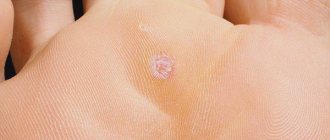Gender change
First of all, people who changed their gender underwent a large amount of preliminary training. Before the procedures, the patient must undergo hormonal therapy under the supervision of a physician. Hormone therapy lasts approximately one year. For some countries, it is not possible to change gender until a diagnosis of transsexualism is made. Without this diagnosis, no action will be taken.
Several areas of plastic surgery are involved in gender reassignment: • Mammoplasty • Phalloplasty • Vaginectomy • Scrotoplasty • Colpocleisis • Hysterectomy • Metoidioplasty • Salpingo-oophorectomy • Ovariectomy
What is Knee Replacement
Knee replacement is a type of arthroplasty. Arthroplasty literally means “surgical joint reconstruction,” and involves the surgical reconstruction and replacement of degenerated joints using artificial body parts or prosthetics.
When the articular cartilage of the knee joint becomes damaged or worn out, it causes pain in the joint and makes the knee difficult to move. Instead of sliding against each other, the bones rub and crush together.
With a prosthesis, the patient will feel less pain and the knee will move correctly.
From woman to man
People who have changed their gender from female to male have undergone surgery to remove breast tissue and reposition their nipples. Surgery to remove the breast is called a mastectomy. In the process, breast tissue is removed along with fatty tissue and partly muscle tissue. The surgeon achieves the best resemblance to the male breast. Vaginectomy involves removing the vagina, and with colpocleisis, the vagina is surgically sutured.
To shape the penis, phalloplasty is needed. The essence of the process is to create a penis using surrounding tissues. There are two methods for forming a phallus: 1. The surrounding tissue in the abdominal area is cut off and sutured into the groin area in the form of a stem. 2. The second method is a suitcase handle. To nourish the cut flesh, the tissue was sutured until the healing process took place. It was then cut to form the head.
The first method is most often used, since the second method disrupts tissue sensitivity. The significant difference between metoidioplasty and phalloplasty is the formation of the penis by lengthening the clitoris. Using the clitoris as a material for creating a phallus is a more promising technology. Its properties are very similar to the penis. People who have changed their gender do not feel discomfort, everything is natural and natural.
In hysterectomy operations, the uterus is removed, and it may include complete removal along with the cervix - salpingo-oophorectomy. A hysterectomy is performed after hormone replacement therapy, which takes about five years. Once the shaft of the penis is formed, the construction of the testicles and scrotum is performed - scrotoplasty. An oophorectomy involves removing the fallopian tubes and along with them the ovaries.
Everything that was listed above relates to FtM, that is, to the transformation from woman to man. But there are also the opposite - MtF, where a woman is created from a man.
Related procedures involved in body reorganization: - liposuction; - gluteoplasty, - mentoplasty; - and others.
Recovery period
How the implantation of the artificial lens will proceed will depend on the correctness of postoperative rehabilitation. At an early stage, it is important to protect the eye from infection. To do this, within 5-7 days it is prohibited:
- wash your hair;
- wash your face in the usual way;
- touch your eyelids with bare hands that have not been pre-treated with antiseptics;
- go outside without an insulating eye patch.
In addition to this, it is necessary to instill antiseptic drops under the eyelid every day for 10 days and carefully monitor eye hygiene.
During the period from the first to the 20th day of rehabilitation, it is important to avoid any phenomena that could provoke blood flow to the face, especially to the operated eye. These include:
- bending forward;
- visits to baths and saunas;
- lifting weights over 3 kg;
- gymnastics and other types of sports activities.
To avoid accidentally injuring the operated eye
, it is advisable to sleep on your side with the healthy eye for the first week. If the intervention was bilateral, it is recommended to sleep on your back. The duration of sleep should be at least 8 hours a day, and the duration of continuous work with active involvement of vision should not be more than half an hour.
Don't forget about nutrition
which will help you recover faster after surgery. Ophthalmologists claim that it suppresses the immune system, and therefore the risk of infectious and inflammatory complications remains high for up to 3 months. To avoid them, it is recommended to include more fresh vegetables and fruits in your diet, which contain vitamins and microelements. Additionally, you can take vitamin complexes that your doctor recommends, or natural immune stimulants, for example, Eleutherococcus. You should give up alcohol, fatty and spicy foods, carbonated drinks and energy drinks for at least 3-4 months.
Conditions for the operation
In order to plan gender reassignment surgery, it is necessary to go through several stages of preparation: • Hormone therapy for a period of one year; • Psychiatric examination; • The operation can be performed from the age of 21; • The patient must have a diagnosis of transsexualism.
Before taking such a serious step, the patient must clearly understand what action he is committing and what awaits him in the future. People who changed their gender knew what they were agreeing to; they thought it through carefully first. Rehabilitation after plastic surgery for gender reassignment takes a very long time and is under the supervision of a doctor. The patient needs to adapt to his new appearance. The procedure for gender reassignment is very lengthy and expensive. Its approximate cost is about $16,000 and includes a large number of procedures.
14
Meniscus treatment - stages
Meniscus treatment - stages
- Carrying out diagnostics, during which the doctor finds out the cause of the violation of integrity, pays attention to the main symptoms of the pathological process, and also prescribes additional research methods with visualization of the knee structures (radiography, ultrasound, computed tomography or magnetic resonance imaging, arthroscopy).
- After analyzing the results of the study, with the help of which the meniscus of the knee is visualized, the operation is selected individually, taking into account a number of factors (the nature and duration of the injury, the anatomical individual characteristics of the patient, his age, the presence of concomitant pathology).
- The preparatory stage before surgery that affects the meniscus of the knee. Treatment is carried out using drugs of various pharmacological groups in order to reduce the severity of the inflammatory reaction, suppress the infectious process, normalize the general condition and adaptive capabilities of the patient's body.
- The main stage of therapeutic measures in which meniscus damage is restored. The operation is performed using various techniques (arthroscopic plastic surgery, open surgery).
- Recovery stage. After knee (meniscus) surgery has been performed, rehabilitation is an important stage that determines the complete restoration of functional activity. Its duration depends on the method of surgical intervention.
In most cases, all stages of therapeutic measures if the meniscus is damaged (surgery, treatment, recovery) are alternated sequentially. Each subsequent stage begins after the previous one has been completed.
4. Lifespan of heart valves
Today, two types of heart valve implants are used in heart surgery: artificial and biological.
The first ones are durable, but their installation is associated with lifelong use of a number of drugs to eliminate the risk of blood clots. Biological valves are closest to living tissues, but wear out faster. Cardiologists are constantly working to develop and introduce into medical practice new types of valves that combine the best properties of both types - durability and maximum acceptability for the body. The service life of artificial valves is 10-15 years. Newer materials are still being studied. Widespread practice of their use in the near future will provide cardiologists with more accurate information about their service life.
Possible complications
In case of complications, the postoperative period lasts longer and is accompanied by the following consequences and symptoms:
- Signs of postoperative inflammation with swelling, redness, pain. Usually the symptoms disappear on their own, but if the inflammation is severe, treatment may be required.
- Increased eye pressure. Corrected with specialized medications.
- Displacement of the prosthesis. A return visit to the clinic is required to have the position corrected by a surgeon.
- Retinal detachment as a result of injury, excessive tension of the eye muscles, or strong mechanical stress. Be sure to see a doctor.
- Hemorrhage localized in the anterior chamber. Inpatient therapy is required.
- Eye infections. They require treatment with antibiotics, antiseptics, and anti-inflammatory drugs.
- Secondary cataract. It occurs extremely rarely and requires treatment under the supervision of a physician.
If you have any complications after cataract removal, you should consult a doctor. Otherwise, the lens may be rejected, and the condition of the visual organs may deteriorate (then the replacement will not bring the expected results).
The first signs of simultaneous manifestations of glaucoma and cataracts
The primary symptoms of glaucoma and cataracts differ, but when the two diseases combine in the eye, they combine and intensify.
Signs of glaucoma:
- fog before the eye occurs periodically, mainly at night;
- in the initial stages of the disease, visual acuity does not decrease, a gradual narrowing of the visual fields occurs, which a person with glaucoma does not notice;
- rainbow circles around light sources appear periodically;
- there may be pressing, aching pain, a feeling of heaviness in the eyes;
- possible redness of the eye.
Signs of cataracts:
- the appearance of persistent fog in front of the eye, while in sunny weather the fog may intensify;
- vision decreases gradually due to increasing fog;
- the appearance of a persistent halo effect (halo) when looking at a light source;
- there is no pain syndrome;
- the eye does not turn red.
Consequences of phalloplasty
Plastic surgery helps patients improve the quality of their sex life and cope with psychological and social problems. But complex surgical interventions can also have negative effects:
- deterioration of erectile function or complete impotence;
- decreased or complete absence of sensitivity;
- difficulty and pain when urinating;
- complications after surgery, infection, inflammation;
- rejection of implants and the patient’s own tissues.
Therefore, before agreeing to phalloplasty, you should weigh everything, give yourself a few months to think, and study the information. If possible, try non-surgical penis enlargement methods that will give results without risks. In resolving such a delicate issue, it is better not to save money and choose specialists who, in case of complications, will be able to provide any assistance.
Article reviewer
Petrovich Ruslan Yurievich
Urologist-andrologist, microsurgeon, plastic surgeon. Specialization: surgical andrology, plastic surgery. 20 years of experience. Doctor's contacts
Ask a Question
Recommended by topic
Rating of extenders The main difference between extenders is the glans clamp - the unit through which the stretcher simulator transfers the load to the penis. Convenience depends on the design...
Read more
PeniMaster Pro in postoperative traction Study-review on the choice of options for postoperative traction during ligamentotomy Authors: Yu. A. Kravtsov, Associate Professor of the Institute of Surgery, TSMU;
Yu. P. Pakholyuk;… Read more











